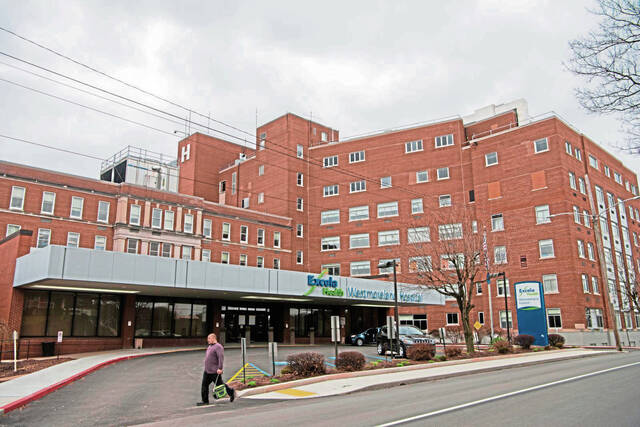Excela Health reports $36.2M loss for fiscal year ending June 30
Westmoreland County-based Excela Health, which merged with Butler Health System in January to form Independence Health, lost $36.2 million in the fiscal year ending June 30, according to a new disclosure report.
That’s $15 million more than losses reported in the previous fiscal year ending in June 2022, when it reported being $21.8 million in the red.
Excela and Butler file their disclosure reports separately despite being subsidiaries of Independence. Butler’s year-end report wan’t available Thursday.
Excela’s revenues increased slightly at $663.5 million, compared with $659.2 million for the fiscal year prior. But expenses also increased. The system faced $699.7 million in operating expenses this past fiscal year compared with $681.1 million in the period ending in June 2022.
The report blamed “declining inpatient and outpatient revenue, unfavorable changes in payer mix and increased staffing expenses” for the drop in revenues.
In a statement, Independence CFO Tom Albanesi said the system is addressing the “material challenges” of the industry and blamed low payments from Medicare and Medicaid as one of the hurdles.
“While we have seen an increase in admissions, we continue to be underpaid by Medicare, Medicaid and Medicare Managed Care payers, whose reimbursement continues to fall short of covering increasing costs, including labor,” Albanesi said. “We are confident that our ongoing actions to drive efficiencies, coupled with initiatives to enhance revenue, will prove productive.”
Background
Both sides of Independence have experienced significant financial losses. The combined health system reported losses of more than $62 million over the nine-month period ending March 31. Independence also cut 226 positions this year.
Butler saw losses of $33.1 million during the nine months ending March 31; losses in the same period last year were just $1.2 million. In the same time periods at Excela, losses went from $10.4 million to $29.3 million.
Butler also had its credit rating downgraded by Fitch in June. The rating agency added a “negative” flag for Butler in February after the health system reportedly breached a bank loan agreement with Truist Bank of North Carolina.
At the time, Karl Propst, director at Fitch Ratings, said the June downgrade reflected Butler’s “operating challenges,” particularly around inflationary pressures and post-covid labor costs.
Independence Health System’s two hospital presidents, Brian Fritz and Karen Allen, confirmed in August that all five of the system’s hospitals — Westmoreland, Frick, Latrobe, Butler Memorial and Clarion — will be part of the system’s future despite the ongoing financial challenges.
The health system has more than 1,000 physicians and advanced practice providers and employs 7,300 people.
Health systems struggle
Liam Migdail, spokesperson for the Hospital and Healthsystem Association of Pennsylvania, said the challenge of getting out of the pandemic has been a challenge for hospital systems such as Independence.
“You have the workforce shortages, which have really driven up costs, because a lot of hospitals are having to bring on temporary staff,” he said. “We’re coming out of record inflation, so the cost of supplies and prescription drugs (are increasing) and, at the same time, especially in rural communities, they are probably looking at a higher percentage of patients paying with Medicare and Medicaid.”
Insurance companies haven’t all kept up with rising costs, he noted.
“There’s really this confluence of a ton of issues at play right now,” he said. “We are starting to see improvement with the workforce challenges, so hopefully there’s some light at the end of the tunnel there.”
Association President and CEO Nicole Stallings said the industry is learning “the pandemic has a long tail.”
“Part of that is certainly workforce shortages that existed before the pandemic that were exacerbated by it,” she said. “Coupled with workforce shortages and labor inflation (are) significant cost increases for supplies and drugs.”
She said hospital drug expenses have increased 19.7% nationally from 2019 to 2022, according to data from Syntellis Performance Solutions.
“That cost inflation overall, coupled with the really historic workforce shortages, continues to be a driver,” Stallings said. “We need help from state agencies, we need help from other partners to ensure that hospitals are financially viable.”
Julia Maruca is a TribLive reporter covering health and the Greensburg and Hempfield areas. She joined the Trib in 2022 after working at the Butler Eagle covering southwestern Butler County. She can be reached at jmaruca@triblive.com.
Remove the ads from your TribLIVE reading experience but still support the journalists who create the content with TribLIVE Ad-Free.

